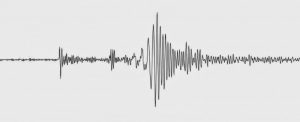
Since 2007, the Collaboratory for the Study of Earthquake Predictability or CSEP has been studying earthquake forecast models to find out how well each model stacks up against its competitors, and how well each forecast predicts later seismic activity.
At four centers in California, New Zealand, Europe and Japan—and in countless labs across the globe—CSEP’s experiments and its rigorous testing procedures have shed light on the predictability of earthquakes, according to a special focus section published June 13 in Seismological Research Letters.
“The fundamental idea of CSEP is simple in principle but complex in practice: forecasting models should be tested against future observations to assess their performance, thereby ensuring an unbiased test of the forecasting power of a model,” said Danijel Schorlemmer of GFZ Potsdam in Germany, who wrote about CSEP’s achievements for the journal.
At each of its four testing centers (development of a fifth center in China is underway), earthquake forecasts generated automatically from a set of models are compared with the region’s observed seismicity. The CSEP experiments are governed by strict rules that include a precise description of the region under study and the high quality of the seismic recordings, among other criteria. The experiments test how well the number, the distribution and the magnitudes of observed earthquakes in a region match up with a forecast’s predictions.
In Italy, for example, there are three CSEP experiments underway to evaluate one-day, three-month and five year earthquake forecasts for the country. As Matteo Taroni and colleagues write in the focus section, the one-day forecasts have proved useful enough for the models to be incorporated into Italy’s Department of Civil Protection’s seismic forecasts.
CSEP center experiments conducted from 2008 to 2017, a time period that included major earthquakes such as the 2011 magnitude 6.2 Christchurch quake and the 2016 magnitude 7.8 Kaikoura earthquake, provided data used to refine real-time community warnings during these major earthquakes, according to David Rhoades of GNS Science and colleagues.
With some caveats, the lessons learned from CSEP experiments can be used to evaluate “classic” forecasts with an eye to making future forecasts more testable. In his focus paper, UCLA emeritus David D. Jackson applied CSEP tests to the 1988 30-year forecast developed by the Working Group on California Earthquake Probabilities for 16 areas of the San Andreas, Hayward, San Jacinto and Imperial faults. He concluded that only one quake, the magnitude 6 Parkfield earthquake in 2004, is associated with the 1988 forecast.
Researchers have also used CSEP to test candidate seismicity models to use in forecasting. One example comes from a focus paper by Camilla Cattania of Stanford University and colleagues, who looked at how the widely-known earthquake triggering mechanism called the static Coulomb stress hypothesis, which suggests stress changes in deformed geological material can move through faults to promote new tremors, can be used in forecasting. Their analysis, applied to the 2010-2012 Canterbury earthquake sequence in New Zealand, suggests physics-based models such as the Coulomb model are more promising for forecasting than previously thought, especially in combination with other statistical models.
The future of CSEP will include more types of earthquake modeling, including combination models, 3-D models and more physics-based modeling, along with expanded use of seismic datasets from Asia and South America, said Schorlemmer.
More information: “Preface to the Focus Section on the Collaboratory for the Study of Earthquake Predictability (CSEP): New Results and Future Directions,” Seismological Research Letters (2018).
“The Collaboratory for the Study of Earthquake Predictability: Achievements and Priorities,” Seismological Research Letters (2018).
“Prospective CSEP evaluation of 1-day, 3-month, and 5-year earthquake forecasts for Italy,” Seismological Research Letters (2018).
“Highlights from the first ten years of the New Zealand Earthquake Forecast Testing Center,” Seismological Research Letters (2018).
“The forecasting skill of physics-based seismicity models during the 2010-2012 Canterbury, New Zealand, earthquake sequence,” Seismological Research Letters (2018).
“Ranking some global forecasts with the Kagan information score,” Seismological Research Letters (2018).
“Exploring magnitude forecasting of the next earthquake,” Seismological Research Letters (2018).
“Ensemble smoothed seismicity models for the new Italian probabilistic seismic hazard map,” Seismological Research Letters (2018).
“Prospective evaluation of global earthquake forecast models: Two years of observations support merging smoothed seismicity with geodetic strain rates,” Seismological Research Letters (2018).
Note: The above post is reprinted from materials provided by Seismological Society of America.










